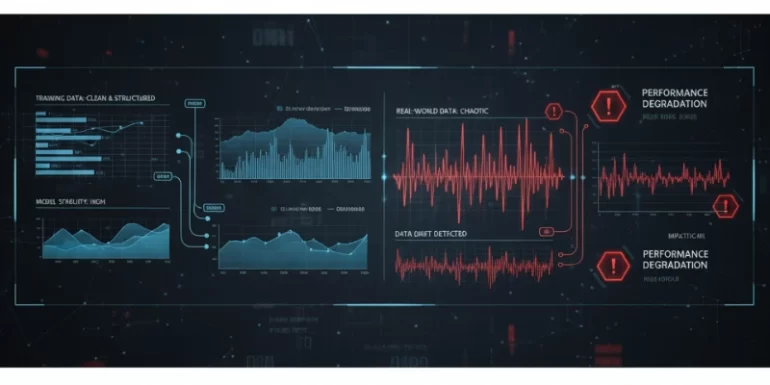In machine learning, building a model is only the beginning. Once deployed, a model does not perform in isolation. It interacts with real-world data that can change over time. These alterations may result in a reduction of model precision and dependability. This is where model drift and data drift come into focus. Monitoring deployed models is essential to maintain performance and deliver consistent results. Concepts like these are deeply explored in the Data Science Course in Mumbai at FITA Academy, where learners gain practical skills for real-world machine learning challenges.
What is Data Drift?
Data drift signifies the alterations in the statistical characteristics of input data as time progresses. This means the data that a model receives during deployment begins to differ from the data it was trained on. For example, if a model is trained to detect spam emails, but the type of language used in spam evolves, the input data shifts. This shift can lead to errors in prediction.
Common causes of data drift include seasonal changes, user behavior shifts, new data sources, and changes in data collection methods. Data drift does not always indicate poor performance right away, but it is often an early warning sign that a model may become less effective.
What is Model Drift?
Model drift, sometimes called concept drift, refers to a decline in a model’s predictive performance over time. Unlike data drift, which deals with input data changes, model drift is concerned with the model’s relationship to the target variable. It means the patterns the model learned during training are no longer valid.
A practical example could be a credit risk model trained on historical customer data. Over time, if financial regulations change or the economy shifts, the way customers behave might also change. As a result, the model’s predictions may become less accurate even if the data format stays the same. To gain deeper insights into handling such real-world challenges, enrolling in a Data Science Course in Kolkata can be a valuable step toward mastering production-level model management.
Why Drift Matters in Deployed Models
Both data drift and model drift can silently degrade the performance of machine learning systems. This leads to poor user experiences, inaccurate decisions, and financial losses. In high-stakes industries like healthcare, finance, or e-commerce, the consequences of drift can be significant.
By not monitoring deployed models, organizations risk relying on outdated or irrelevant insights. Detecting drift early allows teams to retrain models or adjust systems before performance issues escalate.
Signs of Drift in Deployed Models
Recognizing signs of drift early helps prevent performance loss. Here are a few indicators:
- A steady drop in model accuracy or precision
- Unexpected spikes in false positives or false negatives
- Increased customer complaints or negative feedback
- Misalignment between predicted and actual outcomes
Regular performance monitoring, combined with data quality checks, can help detect these signs quickly. These are key skills covered in a Data Science Course in Delhi for those looking to build expertise in model management.
Monitoring Strategies for Drift Detection
Monitoring deployed models is not just about tracking accuracy. It involves using a combination of metrics, tools, and alerts to identify issues before they impact operations. Here are some effective strategies:
- Track model performance metrics
Continuously monitor precision, recall, F1 score, or other relevant metrics. A consistent decline may signal model drift.
- Compare training and production data
Employ statistical methods to assess if there are meaningful differences between the past training data and the new input data.
- Use data validation tools
Implement tools that check for missing values, outliers, or schema changes in incoming data.
- Automate alerts and retraining
Set up thresholds and triggers that notify teams when drift is detected. In some systems, automatic retraining pipelines can also be activated.
- Conduct periodic model reviews
Even when no obvious drift is detected, regular reviews of models can catch subtle changes that affect performance.
Preventing and Managing Drift
While drift cannot always be avoided, proactive steps can reduce its impact. These include:
- Keeping training datasets up to date
- Including recent examples in retraining
- Creating adaptive models that can adjust to new data
- Building feedback loops to capture errors and learn from them
Model governance practices also play a role. Documenting model assumptions, monitoring practices, and retraining schedules helps ensure long-term reliability.
Model drift and data drift are natural outcomes in a changing environment. Ignoring them can lead to poor performance, lost opportunities, and trust issues. Monitoring deployed models helps organizations stay ahead of change. By utilizing appropriate tools and strategies, teams can identify drift early on, uphold model quality, and guarantee ongoing benefits from their machine learning investments. To develop these essential skills, consider joining a Data Science Course in Pune, where practical training prepares you for real-world challenges.
Also check: The Role of Data Science in eCommerce

